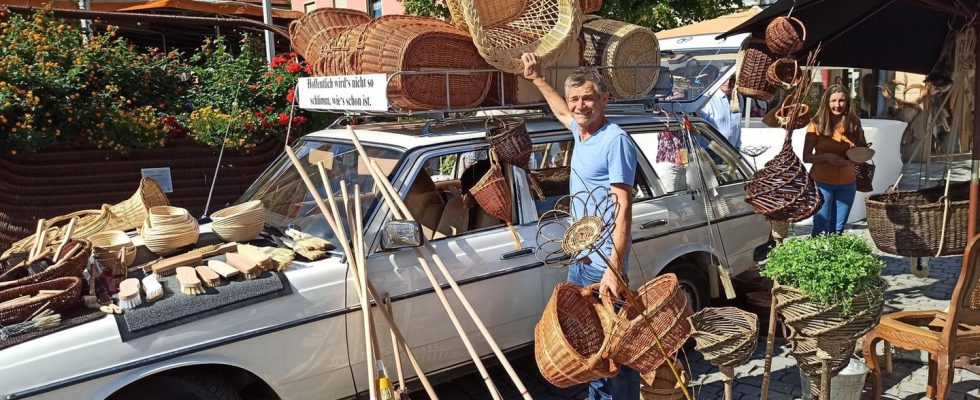No, it has nothing to do with plain industrial goods manufactured in the Far East or the Middle East. The baskets at Andrea Mohr’s stand are masterpieces of craftsmanship. It’s not for nothing that her workshop is called “Braiding Fantasy”. From a simple shopping basket to a stroller tub, from a delicate spider web to a woven seahorse – the trained weaver can make practically anything from willow rods and other natural materials.
The art of weaving has been around for thousands of years, but exactly how long is difficult to determine, as such natural materials decompose quite quickly if they are not stored in a dry place. It is difficult to find a more sustainable material. Every year the young shoots of so-called pollard willows are cut off, dried and further processed. To make them flexible again later, the rods are soaked in cold or warm water for hours or sometimes entire days.
When the bark is removed from the canes, they reveal their bright interior; If it stays on, the colors of the rods change from light brown to green to dark brown. This allows for a lot of creative color freedom.
There are also hardly any limits to the design. Whether small woven egg cups, handy, hand-made shopping baskets or literally gigantic statues (an artist from Belgium makes giant figures) – with muscle power and a lot of technology you can make things out of willow rods, woven raffia from trees such as birches (the raffia sits under the bark). and many other materials to produce objects in an almost inexhaustible variety.
In the 19th century and up until the First World War, basket weaving was the most important industry in the Upper Franconian triangle between Lichtenfels, Coburg and Kronach. There are still factories and numerous craft businesses in the region today that uphold the tradition of weaving.
If you want to learn to weave, you can’t ignore Europe’s only technical school for wickerwork design in Lichtenfels. The training lasts three years, because what looks simple is actually great craftsmanship. Every year, artists from all over Europe come to the city for a weekend in September. The basket market of old has been called the “Flecht Kultur Festival” for a few years now – not only because that sounds less dusty, but also because the supporting program is becoming more and more colorful. Jazz and blues bands perform, and guests enjoy bratwurst and regional beer. Upper Franconia is not only a stronghold of the art of weaving, but also of the art of brewing: almost every village has its small private brewery with an attached restaurant. A variety of beers that is second to none.

